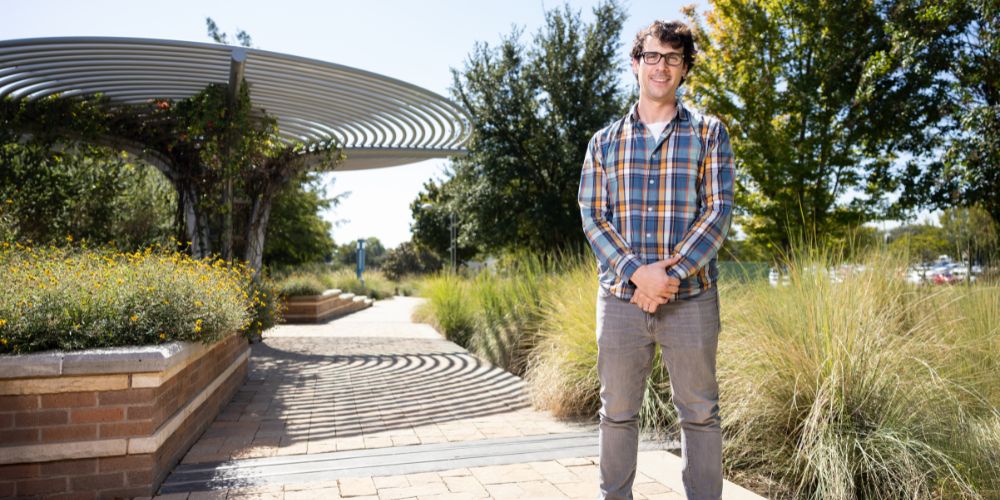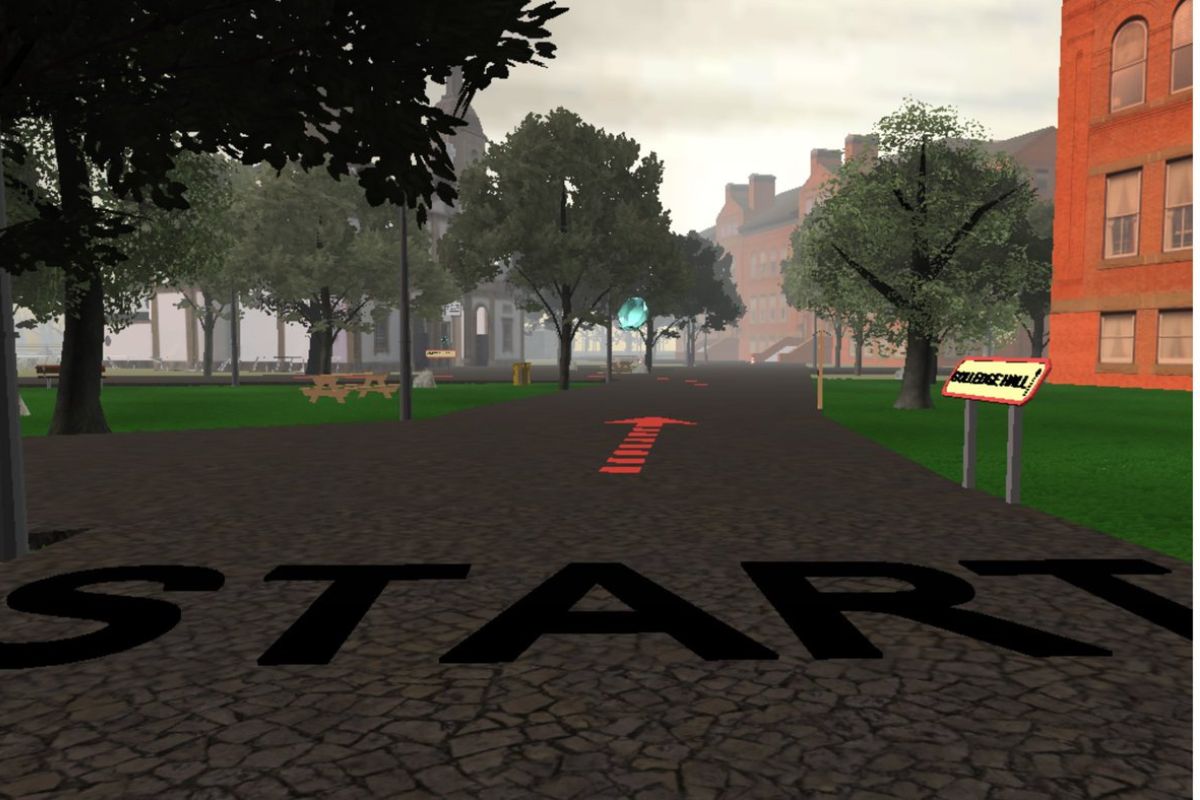UTA expands brain health research
Thursday, Oct 30, 2025 • Drew Davison : Contact

The University of Texas at Arlington is expanding its research on brain health, focusing on how people navigate their surroundings and remember information. The findings could lead to improved strategies for enhancing brain function and slowing cognitive decline in conditions such as Alzheimer’s disease.
According to the National Institutes of Health, more than 6 million Americans deal with some form of dementia, and researchers estimate that 42% of Americans over age 55 will eventually develop dementia. These statistics underscore the need for interventions that can help preserve cognitive function.
Steven Weisberg, who joined UT Arlington as an assistant professor of psychology in September from the University of Florida, is a cognitive neuroscientist with extensive experience in this field. He recently collaborated with Arne Ekstrom and Li Zheng, both from the University of Arizona, on a study in eLife investigating how guided cognitive training helped young adults improve their navigation and memory skills.
The study revealed that the hippocampus—the brain region that supports memory and spatial navigation—did not increase in volume. Instead, Dr. Weisberg said, the improvements stemmed from “functional brain changes that support behavioral differences.”
Weisberg likened the findings to someone trying to improve their tennis or golf game by lifting weights. While building muscle can help, it doesn’t directly improve performance in a skill-based sport.
“When you learn something over time, it’s not necessarily that your brain grows like a muscle,” he said. “Rather, the connections between different parts of your brain shift—the way they talk to one another changes—and the plasticity supports behavioral improvement.”
The findings warrant more research into how short-term training might influence the brain’s memory and navigation systems over time, Weisberg said.
For the study, he and his colleagues monitored 75 young adults over the course of a month, with participants completing 12 two-hour sessions. They were divided into three groups: navigation, verbal memory, and control.

The navigation group trained in a video game-style virtual city, starting at landmarks like Nakatomi Plaza and navigating to other destinations. Weisberg said the participants showed measurable improvement over time.
“They learned new areas of the environment more quickly than at the beginning, which is what we call near transfer. They learned faster over time,” he said. “Far transfer, which we didn’t show in this study, is when people apply what they learn in unrelated tasks.”
The verbal memory group also demonstrated near transfer. They used a memory trick that linked words—such as pony, soldier, mother, or jersey—to personal life experiences.
“The idea is to link words with temporal autobiographical memories to strengthen recall,” Weisberg said. “As expected, participants learned longer word lists over time—again showing near transfer.”
Weisberg and his colleagues are now planning to implement a similar study on older adults aged 63 and above. Primary goals include testing feasibility—whether virtual reality can effectively train navigation behavior in older adults—and measuring behavioral transfer.
“In the younger adult study, we showed near transfer but not far transfer,” Weisberg said. “We want to measure far transfer in this older group.”
The upcoming study will replace the verbal memory group with an attention-focused condition, which has shown promise for far transfer in older adults.
Ultimately, Weisberg and his colleagues at the University of Arizona and the University of Florida aim to launch a larger, well-funded clinical trial to test these outcomes at scale. Weisberg said UTA is an ideal location for such research, thanks to its investment in the $6.2 million Clinical Imaging Research Center, which opened in November 2024 and features a state-of-the-art 3-Tesla MRI machine.
"It’s exciting to be at a University that’s engaging deeply with brain health research,” he said. “With UTA’s investment in imaging and neuroscience, we can ask bigger questions about how the brain changes with age and how we might help people stay sharper, longer."
About The University of Texas at Arlington (UTA)
Celebrating its 130th anniversary in 2025, The University of Texas at Arlington is a growing public research university in the heart of the thriving Dallas-Fort Worth metroplex. With a student body of over 42,700, UTA is the second-largest institution in the University of Texas System, offering more than 180 undergraduate and graduate degree programs. Recognized as a Carnegie R-1 university, UTA stands among the nation’s top 5% of institutions for research activity. UTA and its 280,000 alumni generate an annual economic impact of $28.8 billion for the state. The University has received the Innovation and Economic Prosperity designation from the Association of Public and Land Grant Universities and has earned recognition for its focus on student access and success, considered key drivers to economic growth and social progress for North Texas and beyond.
Latest News
- Brian LopezUTA researchers show that improved home ventilation can ease asthma symptoms and advance public health
- UTA’s WERC sets the standard for water researchUTA engineers lead efforts to control flooding and protect Texas communities for decades to come
- Why old Victorian houses give us the creepsUTA architecture expert Marisa Gomez explores why these ornate homes became the stuff of Halloween nightmares
- Do more with less strain: UTA’s robotic armSoft, air-powered exoskeleton eases muscle fatigue, reduces injuries and boosts workplace safety
- Bitter, sweet and steeped in historyUTA expert shares the story behind the treat, from 16th-century Mexico to chocolate houses in Europe
- UTA study: Just a little movement can lift your moodSwapping just 30 minutes of sitting for light activity boosts energy and mood the next day






